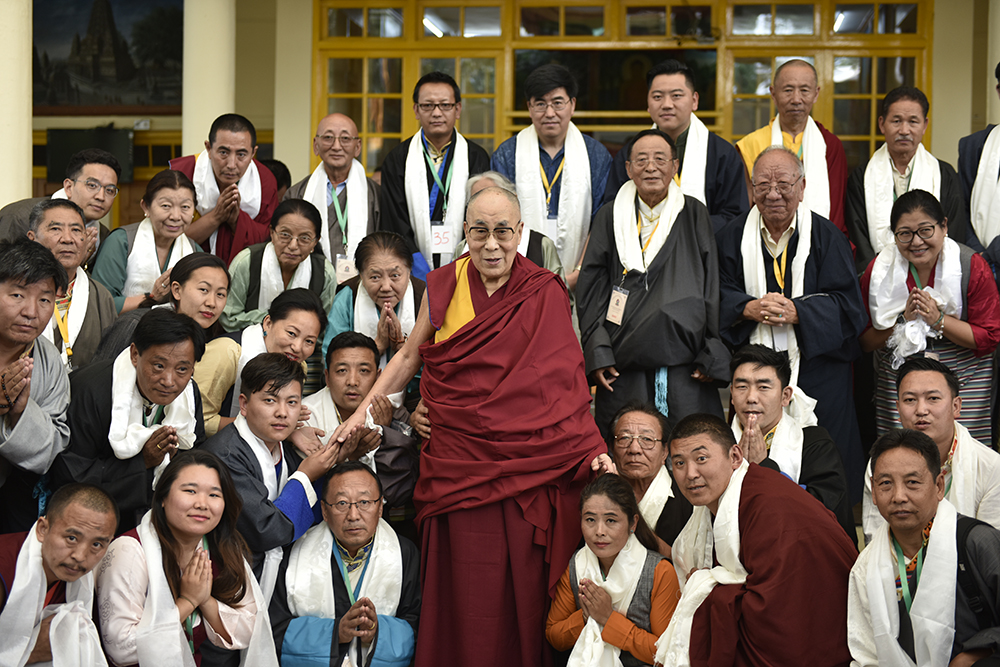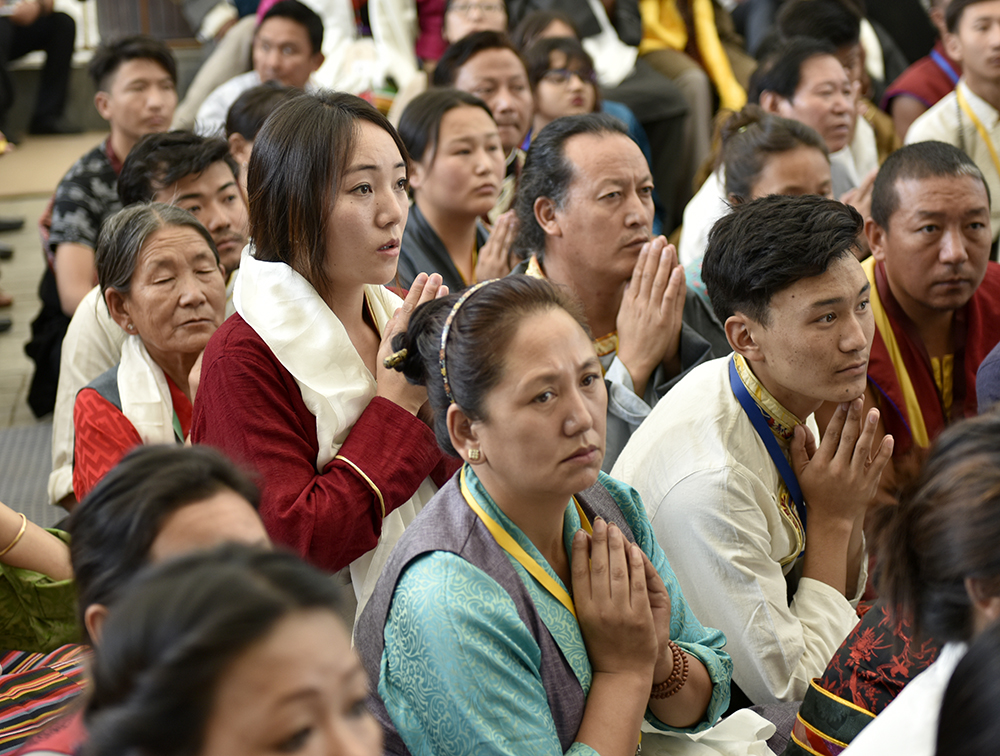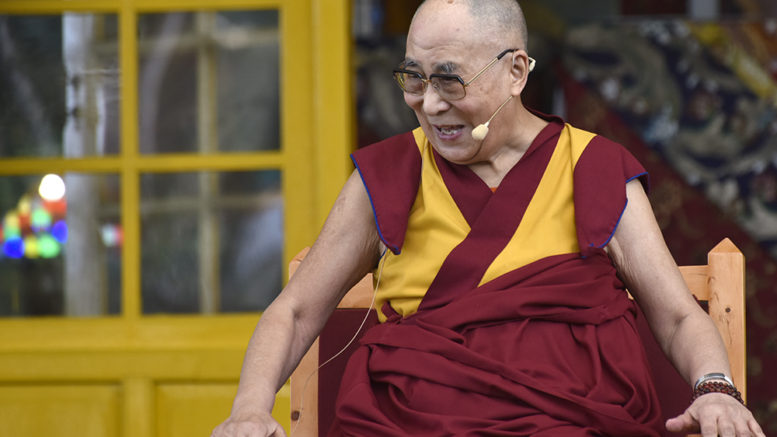I have been reading articles and listening to people share their ideas about Rangzen and Umaylam which I found quite interesting. So, when I got an opportunity to listen to His Holiness address delegates of the first international Umaylam conference at Tsuglagkhang on 30 May, I was quite thrilled.
During the address, His Holiness mentioned that one can have political differences but one should not pit Rangzen vs Umaylam. One should not be overzealous and pit one against the other.
When I went through Middle Way Approach (MWA) policy, I discovered that it is the pursuit of a mutually acceptable and mutually beneficial solution through dialogue, in the spirit of reconciliation.
Through this, what I observed is that MWA is more of a way forward without compromising on the history of Tibet’s independence.
It is clear that historically, Tibet was an independent country. We have our Maps, Treaties, Photographs, Artifacts, passports, and documents authenticating Tibet’s Sovereign Independent Status. Tibet Museum has displayed all the above to inform and bring awareness not just to Tibetans but to tourists visiting Dharamshala.
Just like me, many young Tibetans are still swinging around confused. Most of them are passionate about Tibet but they seem to be at a crossroad, not knowing whether to support Rangzen or Umaylam. It may be because of a shortage of knowledge or it could be due to the fact most of them didn’t pay much attention to the developing trends of the Tibetan political movement during their childhood.

His Holiness the Dalai Lama addressing participants of the first International Conference on the Middle Way Approach at the Main Tibetan Temple courtyard in Dharamsala, HP, India on 30 May 2018. Photo/Tenzin Phende/DIIR
Coming back to the audience with Umaylam participants, His Holiness said: “I was the one who introduced Middle Way Approach and I must see it through. Sikyong is a democratically elected leader. Lobsang Sangay believes in Middle Way Approach 100 percent and practices it as the official policy of the Central Tibetan Administration.”
Many of the high ranking officials in the Central Tibetan Administration were once members of Tibetan Youth Congress and have participated in numerous activities. With the change of time, many of them believe in Umaylam as the best way forward to step on. Change is inevitable that one should act according to a situation.
It isn’t that we didn’t strive for Rangzen. In the early stages of exile, the Central Tibetan Administration under the leadership of His Holiness the Dalai Lama pursued Rangzen. However, there wasn’t any positive response from the Chinese side.

Umaylam conference participants listening to His Holiness the Dalai Lama at Main Tibetan Temple courtyard in Dharamsala, HP, India on 30 May 2018. Photo/Tenzin Phende/DIIR
His Holiness recollects that the Umaylam Policy have a definite history of expert discussion and careful observations.
“Despite all our sincere efforts to come to a peaceful settlement with the Chinese government, eventually in 1959 I, along with my Cabinet, had to go into exile. Soon after arriving in exile we began a series of discussions on this issue with, and solicited suggestions from, the Chairperson and Vice-Chairperson of the Assembly of Tibetan People’s Deputies, the Kashag and many scholars and experts on how to resolve the Tibetan problem through contact and discussions with the Chinese authorities. As a result, around 1974 we adopted the Middle Way Approach.” His Holiness said.
People often ask what are the results of Umaylam. But they tend to forget that we have had successive fact-finding delegations and representatives who visited many areas of Tibet. The contacts have also allowed Tibetans in Tibet and in exile to visit each other. These are some of the direct consequences of the Middle Way Approach.
Most importantly “Middle Way Approach” has received the endorsement and solid support from a large number of Chinese scholars, activists, writers, public personalities.
Many governments have officially stated their support for the Middle Way Approach, including the U.S., India, Britain, France, Germany, and Australia. President Barack Obama particularly released a statement expressing support for the Middle Way Approach.
The most important achievements of the delegation visit were the reinforcement of unity between Tibetans inside Tibet and those in exile.

His Holiness the Dalai Lama posing for one of several group photos with Tibetans participating in an International Conference on the Middle Way Approach during their meeting at the Main Tibetan Temple courtyard in Dharamsala, HP, India on 30 May 2018. Photo/Tenzin Phende/DIIR
His Holiness further explained that Tibetan culture and religion will continue to flourish and serve people. In that view, Tibetan language and culture have played a crucial role in upholding the unity of Tibet and it continues to be so.
He advised the Tibetan people to eschew the regional and religious divisiveness. “Regional and religious divisiveness results from short-sightedness.”
Listening to the unfolding memory of our past, Dwelling into past can’t change the future. I got to know that we were a free country once but we must also look forward to leaping into the future.

Participants to an International Conference on the Middle Way Approach listening to His Holiness the Dalai Lama during their meeting at the Main Tibetan Temple courtyard in Dharamsala, HP, India on 30 May 2018. Photo/Tenzin Phende/DIIR

His Holiness the Dalai Lama sharing some light moments with members of the audience as he departs for his residence at the conclusion of his meeting with participants to an International Conference on the Middle Way Approach at the Main Tibetan Temple courtyard in Dharamsala, HP, India on 30 May 2018. Photo/Tenzin Phende/DIIR

